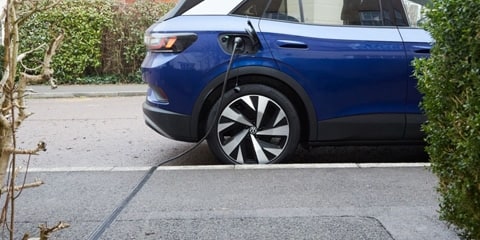The UK government has introduced guidance aimed at helping local authorities establish policies for cross-pavement electric vehicle (EV) charging solutions. This initiative is intended to address the challenges faced by EV drivers without access to off-street parking, such as driveways or garages, and improve access to affordable home charging options.
Addressing a Growing Challenge
For EV owners who rely on street parking, charging options are limited. Many are forced to either use more expensive public charging points or risk the safety and legality of trailing cables across pavements to charge their vehicles at home.
Cross-pavement charging solutions—such as embedded cable channels that sit flush with the pavement—offer a practical alternative, enabling drivers to safely connect their EVs to home chargers. Several local authorities have already begun trialing these systems, which involve discreetly installed channels that guide charging cables from homes to vehicles parked roadside. The services are also offered privately by companies such as Kerbo Charge.
Streamlining the Process
Previously, installing such solutions required navigating complex planning permissions, particularly for modifications to council-owned pavements. The new guidance, issued by the Department for Transport (DoT) and the Office for Zero Emission Vehicles (OZEV), provides a framework for local authorities to evaluate and approve these installations.
Key considerations outlined in the guidance include:
- Parking Accessibility: Assessing whether suitable on-street parking is available adjacent to the applicant’s property.
- Responsibility for Installation and Maintenance: Deciding whether local authorities or suppliers will manage installation and upkeep.
- Cost and Liability: Determining who will bear the costs of installation, permissions, and licensing.
- Minimum Standards: Setting benchmarks for the quality and safety of installed charging channels.
A Clear Need for Solutions
According to the English Housing Survey, around 32% of households in England—approximately eight million homes—lack off-street parking. However, about 16% of households, or four million homes, have access to suitable on-street parking, making cross-pavement charging a viable solution for many.
The cost disparity between public and home charging underscores the urgency of these solutions. Data from Zapmap reveals that EV drivers who rely on public chargepoints pay over £1,000 more annually than those with access to home charging. This cost difference can erode the financial benefits of owning an EV for drivers who cannot charge at home.
Implications for the EV Sector
Industry experts view the government’s new guidance as a pivotal step toward broader adoption of EVs. Many local authorities had previously hesitated to approve cross-pavement charging solutions due to a lack of clear regulations. With this framework in place, stakeholders anticipate significant progress, including a potential nationwide rollout of these systems by 2025.
The guidance aligns with the government’s commitment to supporting the transition to zero-emission vehicles, ensuring that EV ownership remains accessible and practical for a wider range of households. By addressing infrastructure gaps, these measures could accelerate the growth of the EV sector and promote a more sustainable transportation future.
Image Source: kerbocharge.com



